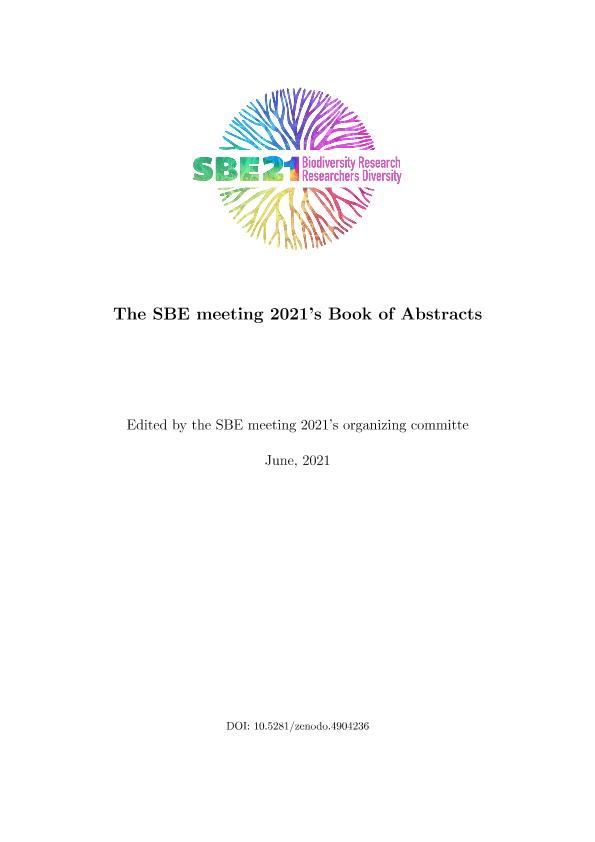Evento
Gains and losses of anemochory in the daisy family
Tipo del evento:
Congreso
Nombre del evento:
II Virtual Meeting of Systematics, Biogeography, and Evolution: The Research of Biodiversity and the Diversity of Researchers
Fecha del evento:
19/06/2021
Institución Organizadora:
SBE meeting 2021's organizing committe;
Título del Libro:
The SBE meeting 2021's Book of Abstracts
Editorial:
SBE meeting 2021's organizing committe
Idioma:
Inglés
Clasificación temática:
Resumen
Dispersal of individuals far from progenitors is a key life cycle process which entails benefits and costs that might result in adaptations and eventually promote speciation. However, owing to the difficulty to estimate the dispersion ability in speciose plant lineages, our knowledge on the role of this key process in evolution remains limited. One of the most widespread dispersal modes in Angiosperms and supposedly predominant among daisies is the use of wind as a seed vector (anemochory). It has been reported that around 70% of the daisy family carry on the dispersal units, presumably structures associated with anemochory such as setose pappi (modified calyxes) and wings. A number of functional parameters have been studied on these traits and it appears that morphological variation within them is correlated with wind dispersal ability. An important role has been given to the pappus in diversification of the daisy family and anemochory possibly has a significant bearing in the ecological and evolutionary success of the family. However, to the best of our knowledge no comparative studies have been carried out on the evolution of dispersal in the family. A comparative study appears opportune since knowledge of the relationships among daisy species is now very robust, at least at tribe level. Thus, the present study aimed to estimate dispersion ability and to assess the role of the papus in the evolution of the dispersal in the familyThe published knowledge on the morpho-functional association of dispersal units among a subset of daisy species representative of the whole family allowed us through predictive models to extrapolate dispersion ability to a larger set of species included in the latest published phylogeny.Subsequently, we reconstructed character evolution of wind dispersal and wind dispersal ability as discrete and continuous characters, respectively. Finally, we reconstructed the evolution of morphological pappus characters not utilized in the estimation of dispersion ability to explore for possible associations with dispersal mode. We found multiple events of reduction and loss of wind dispersal ability, mainly concentrated in the tribes Anthemideae, Arcotideae and Heliantheae. In addition, several more restricted losses also occur across the family. Finally we found evolutionary associations between pappus morphology and dispersion mode. In conclusion, we suggest that pappus morphology could play an important role in the evolution of dispersal in the daisy family and that constraints in the evolution of the dispersion probably exist due to changes in the pappus traits.Future work should concentrate in identifying drivers of such transitions in pappus traits.
Palabras clave:
Asteraceae
,
Disersion
,
Filogenetica Comparada
,
Evolución morfológica
Archivos asociados
Licencia
Identificadores
Colecciones
Eventos(IMBIV)
Eventos de INST.MULTIDISCIPL.DE BIOLOGIA VEGETAL (P)
Eventos de INST.MULTIDISCIPL.DE BIOLOGIA VEGETAL (P)
Citación
Gains and losses of anemochory in the daisy family; II Virtual Meeting of Systematics, Biogeography, and Evolution: The Research of Biodiversity and the Diversity of Researchers; Virtual; Argentina; 2021; 102-103
Compartir
Altmétricas




